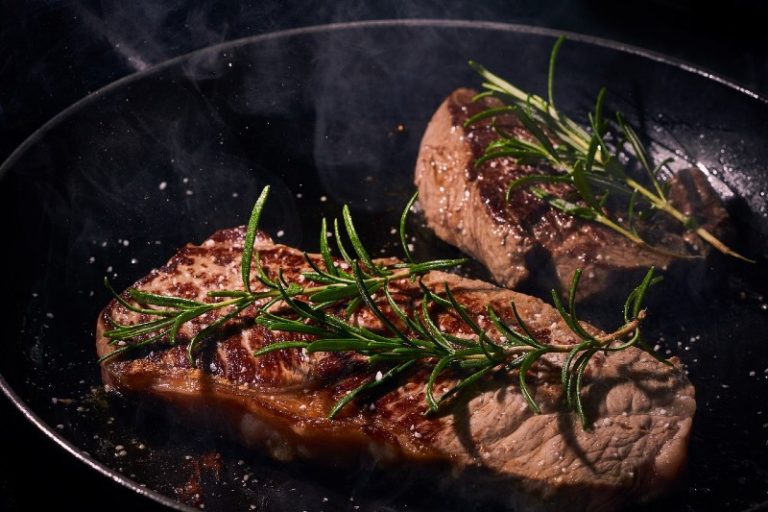What Does Jellyfish Taste Like?
Quick Answer
The taste of jellyfish is neutral with a slightly salty or oceanic flavor. The most notable aspect is usually its texture, which can be crunchy or rubbery, similar to cartilage or firm gelatin. Always make sure to consume jellyfish that has been properly prepared to neutralize any toxins.
What is Jellyfish?
Jellyfish are marine animals belonging to the phylum Cnidaria. They are characterized by a gelatinous, umbrella-shaped bell and trailing tentacles, which can be used for capturing prey and defending against predators.
Unlike fish, they are invertebrates and lack bones, scales, and fins. Jellyfish are found in oceans all over the world, from shallow coastal waters to deep seas, and they play various roles in marine ecosystems, including as predators and as prey for larger animals. Some species of jellyfish are also known for their painful or even dangerous stings.
What Does Jellyfish Taste Like?
When it comes to the taste of jellyfish, don’t expect a flavor explosion-it’s much more subtle than that. The inherent taste of jellyfish is relatively neutral, a blank canvas of sorts that is more notable for its texture than its flavor.
Salty or Oceanic Taste
As a sea creature, it’s not surprising that jellyfish has a taste reminiscent of the ocean. The salty or oceanic undertones are subtle but distinct, often coming through more prominently when the jellyfish is consumed in its simplest form-perhaps just rinsed and sliced. This mild, briny flavor makes it a unique ingredient that lends itself well to a variety of dishes, from salads to appetizers.
Neutral Flavor
The neutral flavor of jellyfish is one of its defining culinary characteristics. Because it doesn’t have a strong flavor on its own, jellyfish often serves as a base for other flavors in a dish. This makes it extremely versatile in cooking-you can spice it up, tone it down, sweeten it, or sour it, and it will take on these flavors willingly.
The neutrality also means that jellyfish can easily fit into a wide range of culinary traditions, from the spicy profiles of Szechuan cuisine to the more umami-rich flavors of Japanese dishes.
Role of Marinades and Seasonings
Given its neutral flavor profile, jellyfish is often marinated or seasoned to bring out its best qualities.
In Chinese cuisine, for instance, it might be marinated in a mixture of vinegar, soy sauce, and sesame oil before being tossed in a salad with vegetables and other seafood.
Japanese preparations might include a light marinade of rice vinegar and a sprinkle of sugar. The marinades and seasonings not only enhance the flavor but also often serve to tenderize the jellyfish, altering its texture to make it more palatable.
What is The Texture of Jellyfish?
When it comes to consuming jellyfish, the conversation often shifts from flavor to texture. Indeed, if you ask someone who has experienced eating jellyfish, it’s likely that their first comment will pertain to its unique texture rather than its taste. This is because the texture of jellyfish offers a distinctive mouthfeel that can be both intriguing and polarizing, depending on individual preferences.
Crunchy
One of the most commonly cited textural characteristics of jellyfish is its crunchiness. Unlike many other seafood items that tend to be soft or flaky, a well-prepared jellyfish offers a satisfying crunch. This makes it a popular addition to salads and cold dishes where a crunchy element is desired.
The crunch is similar to that of certain vegetables like cucumbers or even cartilage. However, the crunch of jellyfish is unique, as it combines both firmness and a certain aqueous quality, making it a texture quite unlike any other.
Rubbery
On the flip side, jellyfish can also be described as rubbery or chewy, particularly when it’s not prepared well or when it’s served in larger chunks. The rubbery texture is sometimes off-putting to those trying it for the first time, but for others, it’s an appealing feature. This rubberiness lends itself well to dishes that are stir-fried or even braised, as it holds up well to heat and retains its textural integrity.
In some culinary traditions, the rubbery texture is intentionally preserved to provide a counterpoint to other ingredients in a dish. For instance, in some Asian salads, the rubbery texture of jellyfish contrasts well with softer elements like tofu or steamed vegetables, providing a layered eating experience.
FAQs
Is The Taste Of Jellyfish Similar To Any Other Seafood?
Not really. While it shares a salty, oceanic undertone common to many types of seafood, its neutral flavor and unique texture set it apart.
What is The Most Noticeable Aspect Of Eating Jellyfish?
The texture is often more noticeable than the taste. Depending on how it’s prepared, jellyfish can be either crunchy or rubbery.
How is Jellyfish Commonly Served?
Jellyfish is most commonly served in salads or appetizers and is often marinated in vinegar, soy sauce, or other seasonings to enhance its flavor.
Is The Taste Of All Jellyfish Species The Same?
No, the taste can vary depending on the species and how it is prepared. However, only certain species are safe to eat, and they generally have a similar flavor profile.
Do You Need To Add Strong Flavors To Make Jellyfish Tasty?
Not necessarily. The neutral flavor of jellyfish makes it versatile, so it can be enjoyed with light seasonings or stronger flavors depending on your preference.
Is Jellyfish Nutritious?
Yes, it is low in calories and fat, and it is a source of protein. However, it is not particularly rich in vitamins or minerals.
Can Everyone Eat Jellyfish?
Most people can safely eat properly prepared jellyfish, but some may have an allergic reaction. Always exercise caution and try a small amount first.
Is It An Acquired Taste?
For some people, yes. The texture, in particular, can be a point of contention, but others enjoy it right away.
Are There Any Safety Precautions To Consider?
Yes, it’s crucial to consume jellyfish that has been properly prepared to neutralize any toxins. Always consume jellyfish from reputable sources.
Can You Cook Jellyfish At Home?
While it is possible to prepare jellyfish at home, it is usually recommended to try it first at a reputable restaurant due to the need for proper preparation techniques.
Can You Eat Jellyfish Raw?
Jellyfish that is prepared for consumption usually undergoes a treatment process that involves boiling and then drying or salting to preserve it and eliminate toxins. So, while it might appear to be raw in the dish you’re eating, it has actually been pre-treated. Therefore, it’s not “raw” in the way that sashimi or ceviche might be considered raw.




